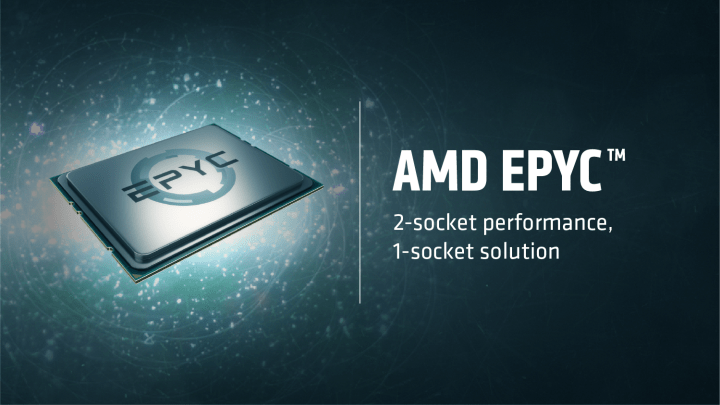Intro to AMD CPUs
The CPU is considered as the central component of a computing device. The CPU’s prime responsibility is to process the instructions coming in from other parts of the computer.
AMD and Intel are the two companies currently controlling the market for desktop CPUs. They both develop CPU models for different higher-end/lower-end tasks depending on one’s budget. While the budget CPUs might be good to perform the mainstream computing tasks, the higher-end CPUs are more like monsters capable of tearing through most energy-consuming computer software.
There is a wide range of models that are available in the market for the AMD EPYC CPUs. These models carry different cores and cache specifications, however, they all have a DDR4 memory and 128 PCI-E lanes.
The basic component of EPYC is CCX, which contains 4 heavily developed Zen cores. The EPYC CPUs also contains 16 PCIe lanes, each link operating at 19 GB/s in every direction.
Each of the CPUs below contains two processors per server. These include:
- AMD EPYC™ 7251
- AMD EPYC™ 7281
- AMD EPYC™ 7401
- AMD EPYC™ 7501
- AMD EPYC™ 7301
- AMD EPYC™ 7351
- AMD EPYC™ 7551
- AMD EPYC™ 7451
- AMD EPYC™ 7601
In other words, AMD EPYC’s framework is totally made for applications and use cases that have a lot of threads working independently such as HPC applications. It is not, however, very well suited for applications with data synchronization requirements like transaction databases.
Features of AMD EPYC CPUs
- They contain up to 32 cores with high performance
- Support up to 2 Terabytes of DDR4 memory across 8 channels
- Contain 128 lanes of PCIe® Gen 3
- They carry an integrated security system
Advantages of AMD EPYC CPUs
- Designed to boost up the performance and computation density
- Easily handle the performance of memory-intensive applications.
- Designed to extend the server capabilities without PCI switching.
- Enables a secure multi-tenancy per CPU.
AMD EPYC 7000 CPUs and Intel’s Skylake Xeon CPUs
If you would compare Intel’s Skylake Xeon CPUs with AMD EPYC 7000 CPUs, AMD offers far more cores at the same price range. For instance, the EPYC 7551 would give a lead of 10 more cores as compared to the Xeon 6152, both of which lie within the same price range.
Furthermore, the 16 core EPYC CPUs have significantly high TDPs in comparison to Intel Xeon CPUs with a turbo clock lower than 3 GHz. At the same time, Intel Xeon’s CPUs carry higher turbo clocks in comparison to the AMD EPYC CPUs.
A quick look at similar CPU models from both the giants will reveal that Intel Xeon CPUs are slightly more expensive. The prime reason could be that Intel believes that its target audience would be willing to pay more for its brand.
Conclusion
The AMD EPYC CPU performs exceptionally well overuse cases involving open-source software or in cases where there are a lot of threads working independently. From the perspective of a platform, AMD EPYC CPU carries a good number of memory channels, PCIe lanes, and a framework that is designed to perform a range of heavy workloads.


